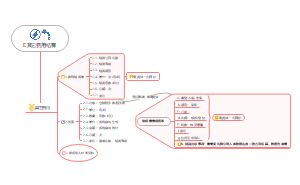导图社区 经济学8大主题
- 64
- 0
- 0
- 举报
经济学8大主题
经济学专业是普通高等学校本科专业,属经济学类专业,基本修业年限为四年,授予经济学学士学位。 该专业以理论经济学为主,兼有应用经济学的属性,也具有很强的应用性与实践性;旨在培养出具有扎实的专业基础知识和基本理论,以及有国际视野和创新创业能力的高素质经济学专门人才。
编辑于2022-08-23 06:18:00- 供需分析
- 市场结构
- 相似推荐
- 大纲
Economics
1.供需分析 Topics in Demand and Supply Analysis
1.Demand Concepts
2.Price Elasticity of Demand
3.Predicting Demand Elasticity, Price Elasticity and Total Expenditure
4.Income Elasticity of Demand, Cross-Price Elasticity of Demand
5.Substitution and Income Effects; Normal Goods, Inferior Goods and Special Cases
6.Supply Analysis: Cost, Marginal Return, and Productivity
7.Economc Profit Versus Accounting Profit
8.Marginal Revenue, Marginal Cost and Profit Maximization; Short-Run Cost Curves: Total, Variable, Fixed, and Marginal Costs
9.Perfect and Imperfect Competition, Profit Maximization
10.Breakeven Analysis and Shutdown Decision
11.Economies and Diseconomies of Scale with Short-Run and Long-Run Cost Analysis
2.公司和市场结构 The Firm and Market Structures
1.Analysis of Market Structures
2.Perfect Competition
3.Elasticity of Demand
4.Other Factors Affecting Demand
5.Consumer Surplus: Value Minus Expenditure
6.Supply Analysis, Optimal Price, and Output in Perfectly Competitive Markets
7.Long-Run Equilibrium In Perfectly Competitive Markets
8.Monopolistic Competition
9.Long-Run Equilibrium in Monopolistic Competition
10.Oligopoly and Pricing Strategies
11.The Cournot Assumption
12.The Nash Equilibrium
13.Oligopy Markets: Optimal Price, Output, and Long-Run Equilibrium
14.Monopoly Markets: Demand/Supply and Optimal Price/Output
15.Price Discrimination and Consumer Surplus
16.Monopoly Markets: Long-Run Equilibrium
17.Identification of Market Structure
3.总产出,价格,和经济增长 Aggregate Output, Prices, and Economic Growth
1.Aggregate Output and Income
2.Aggregate Demand and Aggregate Supply
3.Economic Growth and Sustainability
8.货币汇率 Currency Exchange Rates
1.Introduction & The Foreign Exchange Market
2.Market Functions
3.Market Participants, Size and Composition
4.Exchange Rate Quotations
5.Cross-Rate Calculations
6.Forward Calculations
7.Exchange Rate Regimes- Ideals and Historical Perspective
8.A Taxonomy of Currency Regimes
9.Exchange Rates and the Trade Balance: Introduction
10.Exchange Rates and the Trade Balance: The Elasticities Approach
11.Exchange Rates and the Trade Balance: The Absorption Approach
7.国际贸易和资本流动 International Trade and Capital Flows
1.Introduction & International Trade-Basic Terminology
2.Patterns and Trends in International Trade and Capital Flows
3.Benefits and Costs of International Trade
4.Comparative Advantage and the Gains from Trade: Absolute and Comparative Advantage
5.Ricardian and Heckscher–Ohlin Models of Comparative Advantage
6.Trade and Capital Flows: Restrictions & Agreements- Tariffs, Quotas and Export Subsidies
7.Trading Blocs, Common Markets, and Economic Unions
8.Capital Restrictions
9.Balance of Payments- Accounts and Components
10.Paired Transactions in the BOP Bookkeeping System
11.National Economic Accounts and the Balance of Payments
6.地缘政治介绍Introduction to Geopolitics
1.National Governments and Political Cooperation
2.Non-State Actors and the Forces of Globalization
3.Assessing Geopolitical Actors and Risk
4.The Tools of Geopolitics
5.Incorporating Geopolitical Risk into the Investment Process
5.货币和财政政策Monetary and Fiscal Policy
1.Introduction to Monetary and Fiscal Policy
2.Money: Functions, Creation, and Definition
3.Money: Quantity Theory, Supply and Demand, Fisher Effect
4.Roles of Central Banks & Objectives of Monetary Policy
5.The Costs of Inflation
6.Monetary Policy Tools
7.Inflation Targeting
8.Exchange Rate Targeting
9.Monetary Policies: Contractionary, Expansionary, Limitations
10.Roles and Objectives of Fiscal Policy
11.Deficits and the National Debt
12.Fiscal Policy Tools
13.Fiscal Policy Implementation
14.The Relationship between Monetary and Fiscal Policy
4.理解经济周期 Understanding Business Cycles
1.Overview of the Business Cycle
2.Credit Cycles and Their Relationship to Business Cycles
3.Business Cycle Fluctuations from a Firm’s Perspective
4.Consumer Behavior
5.Housing Sector Behavior
6.External Trade Sector Behavior
7.Theoretical Considerations
8.Economic Indicators
9.Unemployment
10.Inflation









